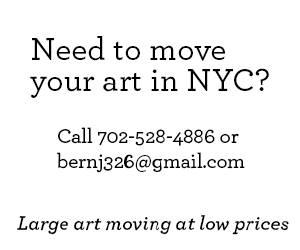Lipstick on Torah Scroll Part 1
27 Jan2011
By David Sperber | Tweet
It is commonly believed that the Jewish world of the past was devoid of aesthetics, and that visual creation was not an integral part of it, at least until the modern period. This claim is partially true, but the sweeping generalization distorts the real picture. In fact, the assumption derives from the antisemitic opinion which was so pervasive in Europe, namely, that Jews are defective human beings, victims of their living conditions, and in bondage to their books; hence, they lack the strength to create art. This was claimed, for instance, by German composer Richard Wagner, in his essay “Judaism in Music” (published in 1850 under a pseudonym and again in 1869, this time under the author’s full name). This perception was internalized by early Zionist thinkers and was expressed, for example, by philosopher Martin Buber.
Jewish culture, by its very nature, engages in rituals that form part of Jewish daily life; consequently, many types of culture-adapted utensils and objects were created over time. Although these are usually categorized as Judaica craft rather than fine art, these designs in fact prominently manifest aesthetic principles grounded in the spirit of a given time and place. In modern times too, as noted by Kalman Bland in his study The Artless Jew, Jewish thinkers did not deny visual presentation yet neither did they succumb to modernist constructs of art as a religion unto itself.
Judaica Twist
A clear trend can be discerned in contemporary Jewish creativity: making use of Judaica motifs and objects by subjecting them to defamiliarization and integrating them into the general context of contemporary art. A noteworthy stream engaging in these practices merits the name “Judaica Twist”. Since the late 1960’s, and even more so during the 1980’s, Judaica objects have assumed a significant place in the work of Jewish artists in Israel and abroad. Note: Judaica, not necessarily Yiddishkeit. In contemporary art, these objects often suggest radical, subversive motives intertwined with important art-theoretical issues.
The “Judaica turn”, as the move was termed by art historian Yael Guilat, includes both the use of Judaica motifs and objects as well as their defamiliarization within the more general context in which they are inserted. In this context, a poetics of visual representation is inseparable from politics of cultural and gender identity. This reading of the works challenges the very notion of high culture by presenting popular culture as art. Ritual objects are customarily regarded as popular, folkloristic culture, yet now, instead of imbuing them with sanctity, they are subjected to critical representation.
The practice of integrating motifs from traditional Judaica into contemporary artworks creates new objects, which then enter into a dialogue with the traditional object and displace it from its original ritual function to the domain of art. It is easy to perceive this practice in today’s folklore theory, striving as it does for multivocity and empowerment of the non-canonical. Thus, alongside enriching canonical discourse by illuminating aspects of popular culture and relocating them to the center, visibility is ensured to what, by its very nature, is not defined: that which remains in flux between different fields and demands redefinition time after time.
The new trend of integrating Judaica objects and motifs into the art world is inseparably linked to changes that have taken place in the world of Judaica itself. In fact, from the early 1930’s on, the production of Jewish ritual objects was dominated by a modernist tendency toward clean, simple and functional design. However, in the 1980’s, a postmodernist move appeared, characterized, as noted for example by Haya Friedberg, by creators seeking to impart meaning to the utensil and the impression it evokes, rather than to its functional design. Judaica objects are thus in flux too; no longer mere utensils for practical use, they now become objects generating a way of life and its symbols of identity.
This trend naturally distanced and differentiated its products from the Jewish aesthetic tradition of the past. Moreover, the move dissipated the pervasive tension between ritual object and art object. Indeed, many artists now explicitly address the interface of religio-cultural practices and art, with their work blurring the dividing line between the disciplines: the accepted distinction between ritual object and artwork loses its meaning.
In fact, the acknowledged dichotomy of practical object / art object had never been absolute; contemporary works are often set up as a postmodernist, practical alternative to the traditional object, or, alternatively, as a new ritual object, suited to its period and culture.
The “Judaica Twist”, then, is less revolution than continuation of existing practices, for Jewish visual creativity has always engaged in product design – of ceremonial objects and culture-adapted utensils. Adopting highly-charged icons, and questioning symbolic and aesthetic taboos and assumptions, can likewise be regarded as inherent to Jewish visual creativity of the past. In fact, halakhic discussions of problems raised by an ever-changing reality and its needs have yielded a variety of halakhic solutions – from the Shabbat clock to the eruv (circumscribing the area in which carrying is permitted on the Sabbath) to shemitta (fallow year) laws, including fictive sale of the land to a gentile.
Product design is another area engaging the aesthetics and poetics of self-renewing halakha. Different artists flirt with testing the boundaries of halakhic rulings; however, a closer examination of their work will often reveal a keen interest in halakhic concepts and criteria, as well as profound insights into the nature of Jewish law.
But we should not confuse this trend with what is happening in Israeli art in general. “Judaica Twist” is a lively, subversive field with some overlap with the way Jewish themes are generally treated in Israeli art. Yet, despite some similarities, canonical Jewish art in Israel generally takes a provocative stance and challenges the very validity of tradition.
– Translated from the Hebrew by Sara Friedman
- In: Exhibition Reviews
- Tags: Israel





Comments are closed.